Yesterday, I picked a picture-perfect zucchini from a plant that I grew from seed way back on March 1. Have you ever known a zucchini plant to remain productive all through spring, through summer, and well into the fall?
This is extraordinary. Let me briefly recount the plant’s life, and then let’s make some guesses as to why it has had such longevity. This may give us clues for growing happy plants of any type.
A zucchini’s life story
In the spring, I ran an experiment comparing seed-starting mixes, and this zucchini plant came from one of the seeds that I sowed for that experiment on March 1.
The variety I sowed is called Desert, purchased from Territorial Seed Company in Oregon. It’s a variety I’ve grown for a few years, and it has performed well each time.
Because zucchini plants grow so large, I often place them under the canopy edge of fruit trees rather than within my vegetable garden beds. So I planted this seedling near a Reed avocado tree on April 9.
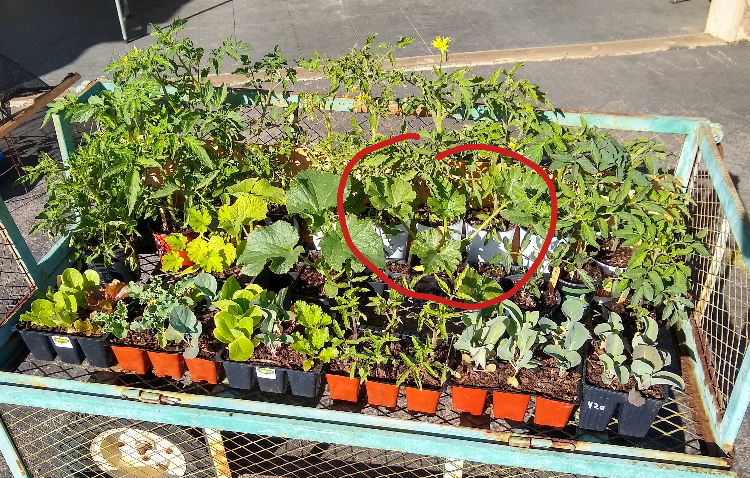
We soon began harvesting zucchini fruit from the plant, but assuming that it would decline in late spring or early summer I sowed seeds for its replacement on June 3. But on June 17, the plant was still doing great.
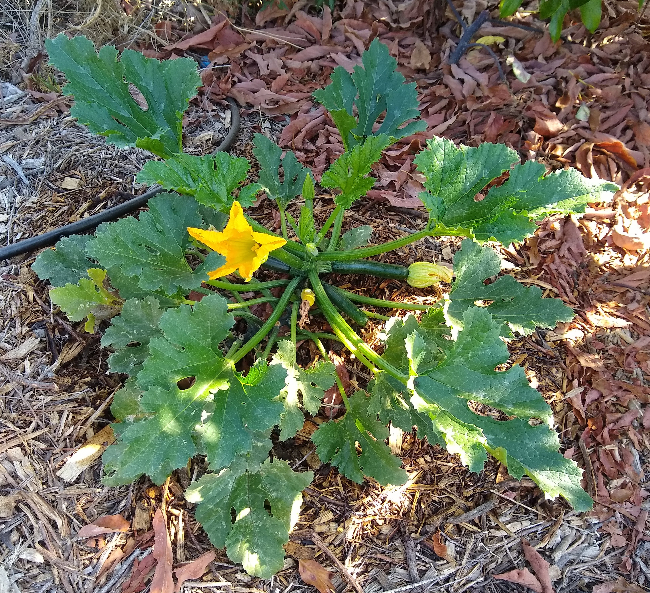
I still planted a Desert zucchini seedling on June 24, only to remove it after a few weeks because no family can handle more than one productive zucchini plant.
In fact, at the end of July we left town for a week, and you know what happens when you don’t pick zucchini for a week. You return to this:
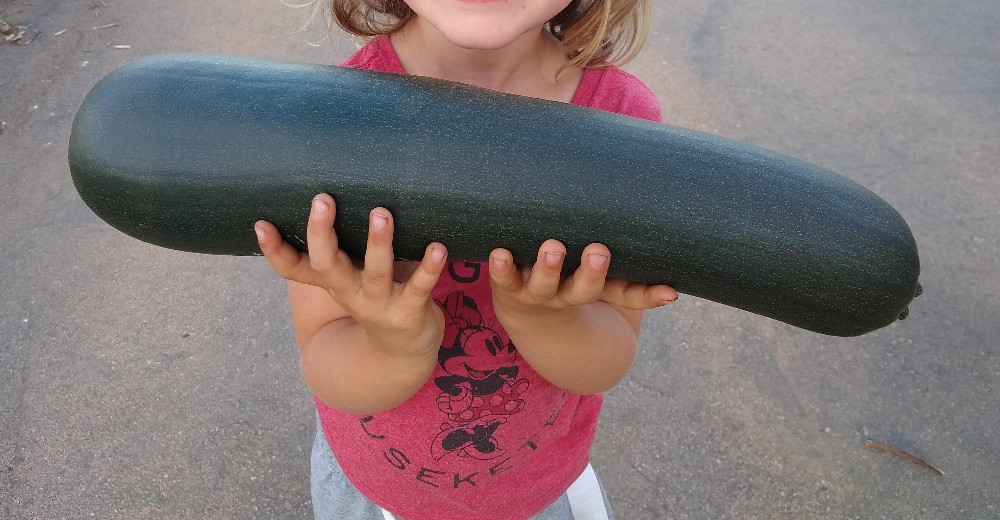
The plant would surely decline in late summer, I thought, so I again sowed seeds for a replacement on August 24 to make sure that we would have zucchini into the fall, but when the new seedling was big enough to plant I found that the first plant was still going strong so I just tossed that seedling into the compost.
Then summer was over and the plant was still flowering and fruiting, and I began to recognize it as extraordinary. It’s almost Thanksgiving now, and the plant continues to give consistent and impeccable produce:

Why the great performance and longevity?
Now I want to know why. What does a zucchini plant need to be healthy and fruitful for months on end?
Water. My irrigation of the plant must have been satisfactory. I have the plant on drippers. There are two, nine inches apart, each emitting 0.5 gallons per hour. During the summer, I ran the drippers two or three times per week, for about 10 hours per week total, giving the plant about 10 gallons per week.
The site of the planting is in full sun. Despite being near the avocado tree (and near a small orange tree), the plant receives unimpeded sunlight for most of the day, even now that the sun is low in the southern sky. Most plants grow best and strongest when they get full sun.
The dirt around the plant is deep — at least two feet deep — and apparently fertile. While I have never added fertilizer here, I have had the area covered in a minimum of three inches of wood chips all year long for about seven years now. That can engender fertility.
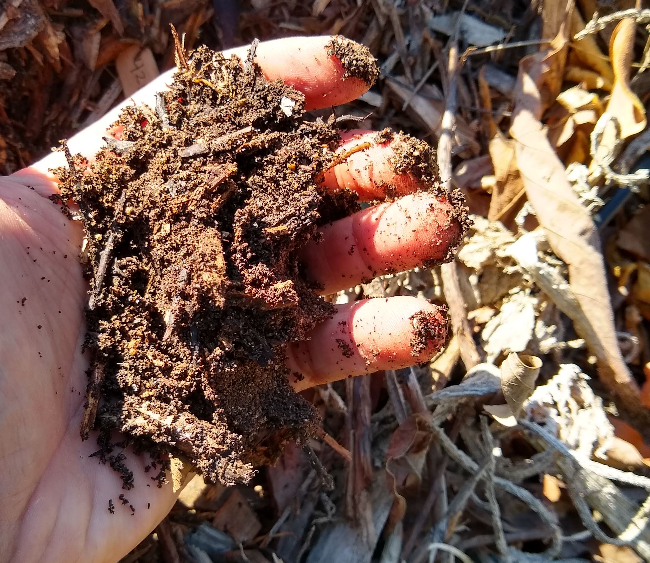
This spot has never been planted with zucchini before. This makes it less likely for soil-borne pests and pathogens that attack zucchini to be numerous here. Zucchini is susceptible to root-knot nematodes, for instance, but obviously they do not inhabit the soil in this part of my yard.
This spot has been planted with many flowers over the years, including sunflowers, snapdragons, gaillardia, and cilantro (that I let go to flower). As you know, flowers feed insects that also feed on vegetable pests. I didn’t notice any aphids on this zucchini plant at any point in the year. It’s possible that predators of aphids such as syrphid flies and lady bugs have become numerous in the area because of the flowers I provide for them, and they kept the aphid numbers very low.
I also did not notice any powdery mildew on the leaves of the plant. Zucchini plants always get powdery mildew on their leaves as they age, in Southern California locations close to the ocean anyway. (See “Carpinteria Community Garden.”)
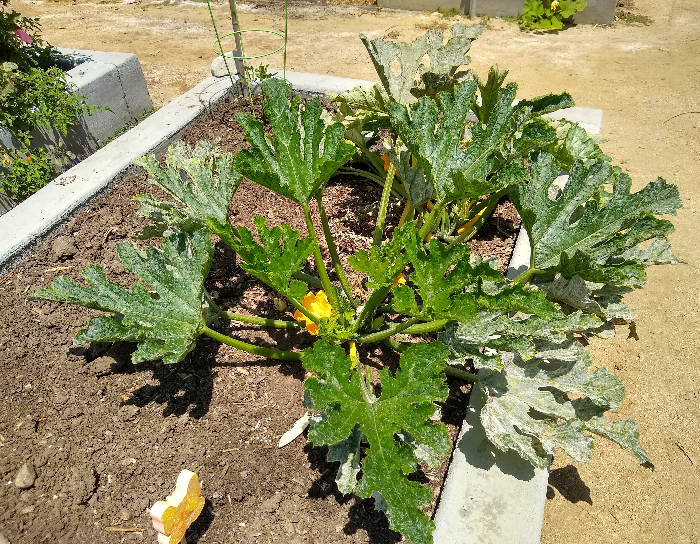
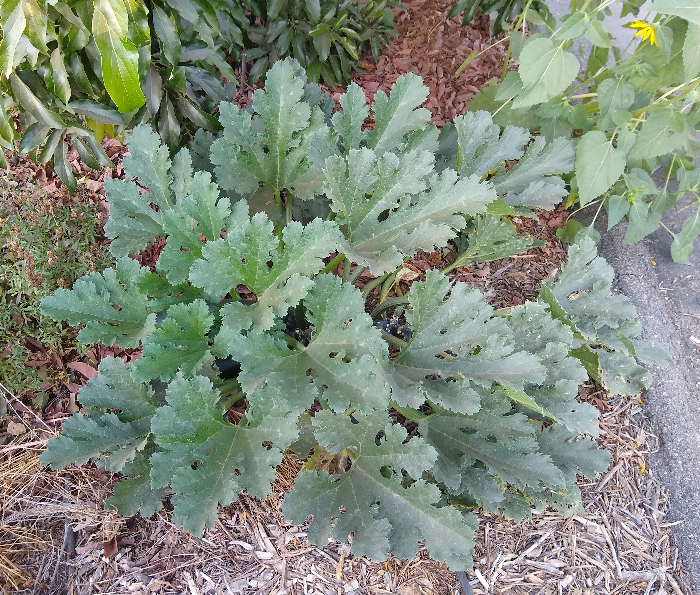
But my location is twenty miles from the ocean and I rarely see powdery mildew on any of my plants. Therefore, the lack of powdery mildew on my zucchini is probably mostly due to the inhospitability of my environment to that disease although Desert zucchini is said to have some resistance to powdery mildew so the choice of variety may have also helped here.
I don’t spray anything in my yard, but with this zucchini plant I never even bothered removing old leaves, as I sometimes do with zucchini plants in order to make them at least look healthier. With this one I have just let the old leaves degrade naturally and be munched by bugs. This doesn’t seem to have had any negative effects.

I didn’t do anything extraordinary to deserve this extraordinary zucchini plant. It’s mostly luck. Sometimes these plants just happen, like my tall dinosaur kale plant did. Nonetheless, I think we can make some good gardening choices to help them happen more often.
All of my Yard Posts are listed HERE.
Thank you for the SUPPORT!

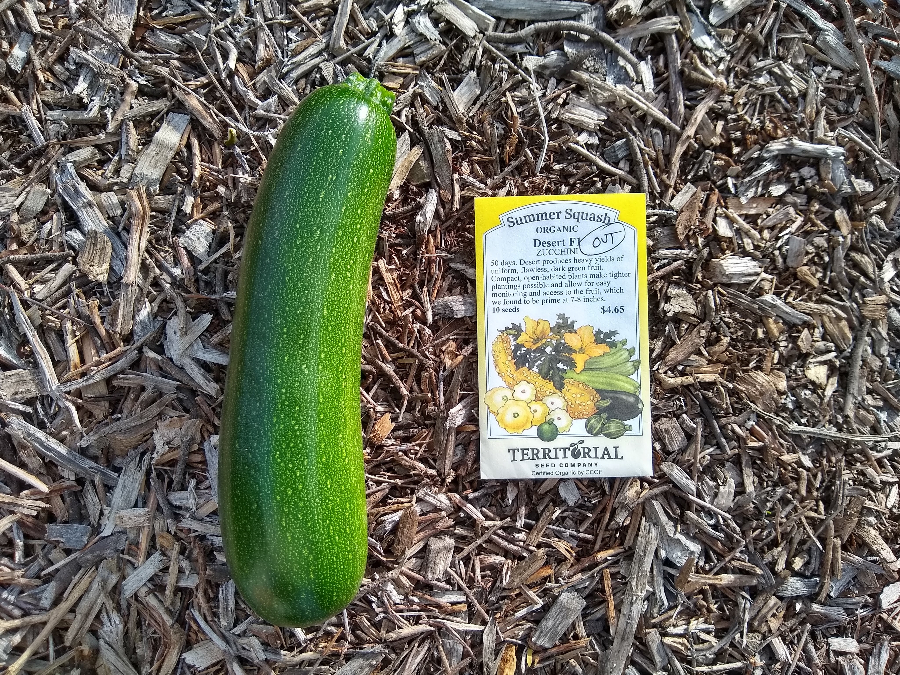


That zucchini plant is amazing! I have not had good luck with the zucchini plants the past few years. I’m not sure why. But I may try this variety.
I have a question about artichokes. I cut back my plants and they now have new growth. One has produced two plants that appear to be connected. I’m not sure if I should leave it alone or try to separate. I’m sure I would have to cut it.
Thank you!
I’m sure Greg will have the better response, but I wanted to speak up that my artichokes (South Santa Barbara County) also have new growth right now (mid-Nov) after I failed to divide them while they were dormant. I’m leaving them alone. It’s not the first time I’ve missed my opportunity with these plants, and they’ve always continued to grow and produce. I’m sure it’s healthier for the plants to divide them, but now that they have growth it would probably harm them to dig them up. I’m leaving them to “do their thing” as I have before. Best of luck to you and your chokes!
Seeing multiple new plants on one old plant is what should have been divided in dormancy. I just catch it next time.
Just wanted to say that, for the second fall in a row, I’m fully convinced that Territorial Desert zucchini is the magic here. It has good PM resistance, but it must just have some cold/cold soil resistance too. Zucchini on November 28th is a luxury!!!
https://drive.google.com/file/d/18xn8i7SrUW4oUrQ5_VWsHQQxAtjTxrQ7/view?usp=drivesdk
Jessica, what a beautiful plant!
I’ve been paying more attention to varieties lately. So far I prefer Veronica cauliflower (Territorial). It really does seem heartier than romanesco from other companies, and the flavor is great. No broccoli favorite yet, but this is my first year having Belstar seeds (Botanical Interests) to try. I seem to lose a lot of brassica seedlings to pests. I prefer green arrow pea (Territorial) for both taste and productivity; Lincoln (Burpee) was not as good. Limka romano bean (Territorial) is really good. I haven’t found a romano as productive as regular green beans, but the flavor is amazing and the heat tolerance is good. Brandy boy tomatoes (seed from burpee) have nematode resistance and great flavor and productivity. I’ve tried a bunch of cucumbers, and everything besides Armenian yard long (Seed Therapy) can go kick rocks. It’s superior in flavor, productivity, longevity, heat tolerance, cold tolerance, everything. I’m still picking them now! Bintje potatoes (bought at Walter Anderson) beat out the others I tried for productivity and flavor, but they don’t store. Mini love watermelon (Territorial) was a winner, but I think watermelon likes the Lakeside climate in general. I remember you saying you started the blog you wished you had as a new gardener. You’ve certainly started the blog I wished I had! I wouldn’t even be attempting to keep variety notes if you (and your post about Farmer Roy) hadn’t given me somewhere to start. And I definitely wouldn’t be eating zucchini at the end of November.
I greatly appreciate the variety reports! Thank you, Jessica. I looked for Bintje potatoes at WAN the other day but they don’t have any this year, unfortunately, and I can’t find another source.
Ell”s farm stand has gem avos
Thanks for your response Christine. Mine has growth also at this point. (I am in Simi Valley). So I will leave it as you did. I will watch next year when dormant.
Greg,
that is truly amazing plant a good soil and placement is so important. You are absolutely right about the powdery mildew. In my garden powdery mildew is the number one killer and this year my second crop was infected with mosaic virus a had to remove all the plants so it wont spread around the garden. I sometimes wonder how the farmers are so successful growing all the fruit and veg’s that most people in the grocery store don’t appreciate when the produce has little blemish. Anyway you do have a green thumb and lots of knowledge, which helps.
Have had short lifespans on my zucchinis in every year past. They just seem to wither or get powdery mildew and stop producing.
This year I still have one plant, a Black Beauty, possibly from Home Depot, that still gives me at least one nice zucchini per day, plenty for the two of us. I planted it mid-March.
I also planted a couple of Green Grillers which were cute, fat, stubby zucchinis perfect for what they were named for. I think my last plant will be giving me the last griller of the season tomorrow.
We have had frost two mornings already last week.